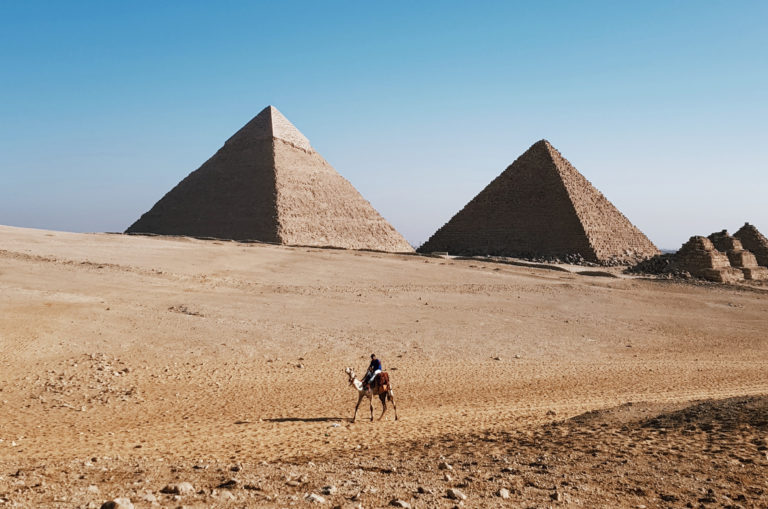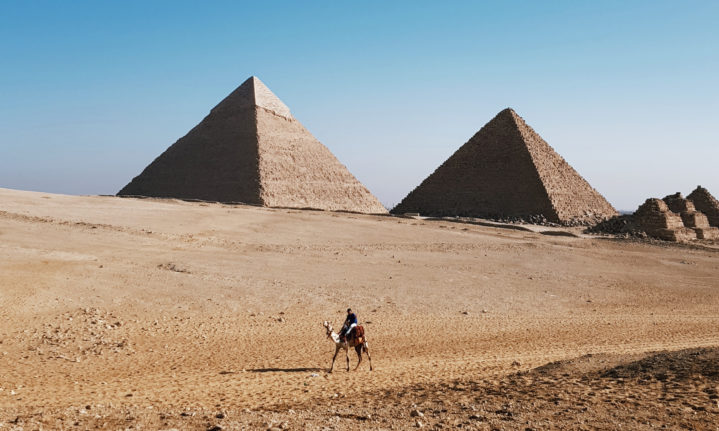No, they were not built by aliens, although that would almost be easier to believe given the skill and labour required in erecting those awesome ancient pyramids. From statue vandalism to spite the gods and age-old mistaken facts about the labourers who built these triangular tombs that have stood the test of time, here are some facts you should know about Egypt’s pyramids.
The Pyramid of Djoser is the first and was created by Imhotep, one of Pharaoh Djoser’s chief officials, in Saqqara, a part of Giza. It was thought that deceased pharaohs could comfortably transition into gods inside these pyramidal tombs.
The Great Pyramid of Giza is the largest pyramid, also known as the The Pyramid of Khufu, which housed the son of the Pharaoh Sneferu, who was buried in the Red Pyramid.

The mystery of the missing noses
You may have noticed that many ancient Egyptian statues and busts have missing noses, the Great Sphinx of Giza being a famous example. Many tourists had asked tour operators why so many of the ancient artefacts in museums had no noses, as if they had been chipped or knocked off. It was likely that protruding and 3D shapes would be more liable to damages.
However, some researchers believe that this is no mere coincidence but actually vandalism, done by individuals who believed that it would stop the statue of a god from breathing.
Other vandals would remove the ears of a statue to prevent certain gods from hearing and answering prayers.
The statues remained noseless (or earless) ever since.
Paid labourers
Contrary to the common belief that the pyramids on the outskirts of Cairo were built by slaves – namely those of some cruel pharaoh – they were actually built by labourers who were paid for their work.
Graves found containing the bodies of labourers suggest that the workers were honoured in death for contributing to this great architectural and royal feat. All the Egyptian pyramids were built in less than a century.
The pyramids have a mass of 5.9-million tonnes, which each hefty granite or limestone brick weighing a couple of tonnes. Polished limestone on each of the four smooth sides used to glisten and shine, but time and the elements have done away with most of it.
Underground tunnels
While each pyramid is technically connected to the Nile River via a canal, some even have underground tunnels. Some of the excavated ones are even known to the Egyptian government, who guard the secrets and whereabouts of these fascinating underground paths.

Wonders of the ancient world
The pyramids were deemed one of the seven wonders of the ancient world, with sites based mainly around the Mediterranean and decided by Western authors. Today the pyramids are the only ancient wonders that have endured over centuries.
Room temperature, please
Ancient Egyptian civilisations knew a thing or two when it came to ventilation. The inside of the pyramids are said to stay a cool 20°C at any given time. Despite the bulky multi-tonne mass of the pyramids, the inside of them can withstand the harsh heat in summer and cold desert nights to provide a temperate zone for your favourite pharaoh to decompose and become a god.
Pyramids around the world
Saqqara is another Egyptian site where you’ll find slightly different pyramids. These ones ascend in steps, instead of having smooth inclines towards the flatter top. Egyptian pyramids are aligned to the north as well.
Egypt isn’t the only home to pyramids in the world, just the most famous. In Sudan, Egypt’s nether-neighbours, there are over 200 Sudanese pyramids, slightly narrower and on a much smaller pyramid than the ones in Egypt that can reach heights of 160 metres. Of course, the pyramidal shape isn’t unique to the Egyptians, either. The inspiration for the pyramids is believed to come from the Benben stone, capstone of the same shape that formed part of the country’s ancient mythology and sits atop the sun temple in Heliopolis, Egypt.
The Pyramid of the Sun in Teotihuaćan, Mexico is the third-largest pyramid in the world, which was found and named by the Aztecs.
Outside the main entrance to the Louvre Museum in Paris, the wide glass and metal pyramid with hundreds of smaller triangles is another iconic sight.
Images: Unsplash



















